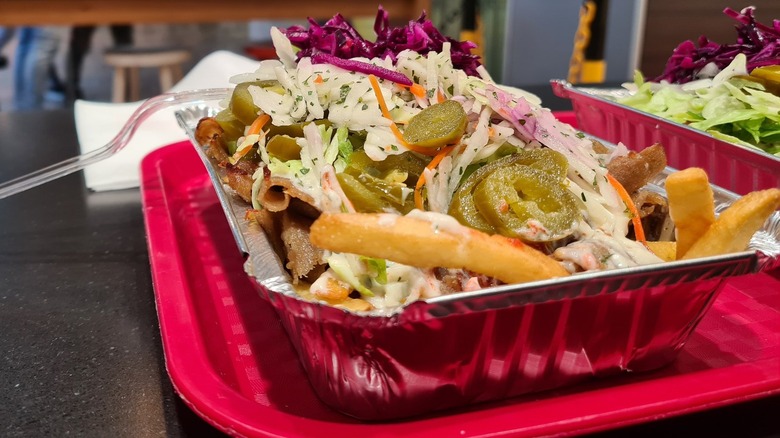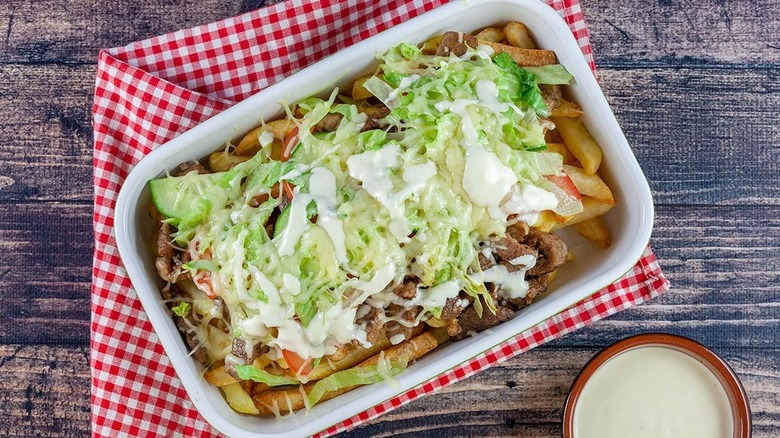The Multicultural Dish That's A Street Food Staple In Rotterdam
Stereotypes are best if avoided. Take the Dutch, for example. You might think that their country is all about riding bicycles and eating cheese, but there is much more the Netherlands has to offer. One of the best ways to know more about a place is by trying its food, and the Netherlands has many traditional dishes, so let's take a look at some of them. For example, poffertjes are small Dutch pancakes served with melted butter and sprinkled with icing sugar. On to savory dishes, stamppot is a mashed mixture of potatoes and vegetables such as onions, turnips, and carrots, and often topped with sausages.
On the other hand, bitterballen are small balls consisting of chopped veal or beef that are seasoned, mixed with a bit of stock, rolled in breadcrumbs, and deep-fried in hot oil until golden and crisp (via EuroTunnel). Now that's a perfect bar snack. And how about the sweet stroopwafels, composed of caramel syrup sandwiched between two thin waffles (per Travel Addicts)? Who wouldn't love them? Besides these foods, there are many multicultural dishes in the country, and one such dish is a street food staple in Rotterdam.
Kapsalon, a multicultural staple dish
Have you heard about kapsalon? Atlas Obscura reports that this dish is a street food staple in the city of Rotterdam and consists of fries, meat from döner or shawarma, grated Gouda cheese, salad greens, garlic sauce, and sambal oelek. The dish is typically served in an aluminum container. It was invented in 2003 in a shawarma joint in Rotterdam when a Cape Verdean hairdresser Nathaniël Gomes mixed all his favorite foods into one dish. Soon, he started ordering kapsalon, which means "hairdresser," and the unique dish was born (via DutchReview).
Kapsalon is now a typical example of a Dutch multicultural dish — the meat has Middle-Eastern origins, the hot sambal sauce is originally Indonesian, and the Gouda cheese is probably the most recognizable Dutch product. But, in the end, the dish was invented by an immigrant, just as many other dishes in the Netherlands are — take rijsttafel, for example, an Indonesian feast meaning "rice table," which consists of small portions of beef, chicken, vegetables, skewers, fish stews, and various other ingredients (via InLivin). And nowadays, kapsalon is so popular that it can even be found in other variations — with chicken, falafel, and fish — and in other locations such as Kathmandu, Nepal.

